#Indigenous languages
Text
Long considered extinct, pentl'ach has now been declared a living language and added to British Columbia's official list of First Nations languages.
The reclassification of pentl'ach (pronounced "PUNT-lutch") was the result of both linguistic and administrative work by the Qualicum First Nation on Vancouver Island's east coast, with support from the First Peoples' Cultural Council.
The Coast Salish language had been considered extinct because the last well known fluent speaker died in the 1940s.
But Mathew Andreatta, a Qualicum member and researcher with the pentl'ach revitalization project, said the language was never truly gone.
Andreatta called the reclassification "an affirmation of something that we've always known and that we've always felt."
He said the move is important because it is healing for his people, but also because it opens more doors to continue revitalizing the language.
Continue Reading.
Tagging: @politicsofcanada
#Indigenous#First Nations#pentl'ach#indigenous languages#cdnpoli#canada#canadian politics#Qualicum First Nation#Vancouver Island#british columbia
2K notes
·
View notes
Text
“Grandma’s House is not like a drop-off daycare or an immersion school where only the children learn. Through a grant from the Blue Cross and Blue Shield of Minnesota Foundation, parents get paid to learn alongside and speak with their children in Ojibwe five hours a day, four days a week.
…
‘Learning Ojibwe in college and pursuing learning the language and teaching the language, I hadn't really thought about babies speaking it as their first language,’ Erdrich said.
‘It seemed like this impossible thing because of how much work it would be, how hard it would be to have a whole community and other babies to be speaking Ojibwe, but it's happening! And it's amazing because it's the peer language here so the kids are speaking Ojibwe to each other,’ she said.
…Grandma’s House is not like other college language programs. Learning a Native language in an academic setting is beneficial for language revitalization, but academic learning does not usually include learning the traditions, heritage or spirit within a Native community.
…
Although it’s common to refer to a language no longer commonly spoken as a ‘dead language,’ some people in the language revitalization movement instead refer to them as ‘asleep.’ The idea is that sleeping languages can be awakened through family and community efforts.
Waking up Native languages can also bring intergenerational healing.”
#linguistics#language#sociolinguistics#language and identity#language and culture#language and power#langblr#language learning#language acquisition#language revitalization#ojibwe#anishinaabe#minnesota#indigenous#indigenous languages
9K notes
·
View notes
Text
Interior Department Announces New Guidance to Honor and Elevate Hawaiian Language

"In commemoration of Mahina ʻŌlelo Hawaiʻi, or Hawaiian Language Month, and in recognition of its unique relationship with the Native Hawaiian Community, the Department of the Interior today announced new guidance on the use of the Hawaiian language.
A comprehensive new Departmental Manual chapter underscores the Department’s commitment to further integrating Indigenous Knowledge and cultural practices into conservation stewardship.
“Prioritizing the preservation of the Hawaiian language and culture and elevating Indigenous Knowledge is central to the Biden-Harris administration's work to meet the unique needs of the Native Hawaiian Community,” said Secretary Deb Haaland. “As we deploy historic resources to Hawaiʻi from President Biden’s Investing in America agenda, the Interior Department is committed to ensuring our internal policies and communications use accurate language and data."
Department bureaus and offices that engage in communication with the Native Hawaiian Community or produce documentation addressing places, resources, actions or interests in Hawaiʻi will use the new guidance on ‘ōlelo Hawaiʻi (Hawaiian language) for various identifications and references, including flora and fauna, cultural sites, geographic place names, and government units within the state. The guidance recognizes the evolving nature of ‘ōlelo Hawaiʻi and acknowledges the absence of a single authoritative source. While the Hawaiian Dictionary (Pukui & Elbert 2003) is designated as the baseline standard for non-geographic words and place names, Department bureaus and offices are encouraged to consult other standard works, as well as the Board on Geographic Names database.
Developed collaboratively and informed by ʻōlelo Hawaiʻi practitioners, instructors and advocates, the new guidance emerged from virtual consultation sessions and public comment in 2023 with the Native Hawaiian Community.
The new guidance aligns with the Biden-Harris administration’s commitment to strengthening relationships with the Native Hawaiian Community through efforts such as the Kapapahuliau Climate Resilience Program and Hawaiian Forest Bird Keystone Initiative. During her trip to Hawaiʻi in June, Secretary Haaland emphasized recognizing and including Indigenous Knowledge, promoting co-stewardship, protecting sacred sites, and recommitting to meaningful and robust consultation with the Native Hawaiian Community."
-via US Department of the Interior press release, February 1, 2024
--
Note: I'm an editor so I have no idea whether this comes off like as big a deal as it potentially is. But it is potentially going to establish and massively accelerate the adoption of correctly written Native Hawaiian language, as determined by Native Hawaiians.
Basically US government communications, documentations, and "style guides" (sets of rules to follow about how to write/format/publish something, etc.) can be incredibly influential, especially for topics where there isn't much other official guidance. This rule means that all government documents that mention Hawai'i, places in Hawai'i, Hawaiian plants and animals, etc. will have to be written the way Native Hawaiians say it should be written, and the correct way of writing Hawaiian conveys a lot more information about how the words are pronounced, too, which could spread correct pronunciations more widely.
It also means that, as far as the US government is concerned, this is The Correct Way to Write the Hawaiian Language. Which, as an editor who just read the guidance document, is super important. That's because you need the 'okina (' in words) and kahakō in order to tell apart sizeable sets of different words, because Hawaiian uses so many fewer consonants, they need more of other types of different sounds.
And the US government official policy on how to write Hawaiian is exactly what editors, publishers, newspapers, and magazines are going to look at, sooner or later, because it's what style guides are looking at. Style guides are the official various sets of rules that books/publications follow; they're also incredibly detailed - the one used for almost all book publishing, for example, the Chicago Manual of Style (CMoS), is over a thousand pages long.
One of the things that CMoS does is tell you the basic rules of and what specialist further sources they think you should use for writing different languages. They have a whole chapter dedicated to this. It's not that impressive on non-European languages yet, but we're due for a new edition (the 18th) of CMoS in the next oh two to four years, probably? Actually numbering wise they'd be due for one this year, except presumably they would've announced it by now if that was the case.
I'm expecting one of the biggest revisions to the 18th edition to add much more comprehensive guidance on non-Western languages. Considering how far we've come since 2017, when the last one was released, I'll be judging the shit out of them if they do otherwise. (And CMoS actually keep with the times decently enough.)
Which means, as long as there's at least a year or two for these new rules/spellings/orthographies to establish themselves before the next edition comes out, it's likely that just about every (legit) publisher will start using the new rules/spellings/orthographies.
And of course, it would expand much further from there.
#don't ask me about the magazine and newspaper half of this#bc I do Not know AP style#except the differences I'm annoyed at lol#ap doesn't respect the oxford comma#hawaii#hawaiʻi#language#orthography#linguistics#language stuff#hawaiian#native hawaiian#united states#publishing#book publishing#indigenous#indigineous people#indigenous languages#language revitalization#language resources#editorial
383 notes
·
View notes
Text
y'all please check out my friend alex's book!! its a free online resource for learning māori, the endangered indigenous language of new zealand, and we hope that it can help spread this beautiful language to even more people!
(plus this book is a blast hehe)
#te reo māori#māori#tereomāori#tereomaori#te reo maori#maori culture#language learning#indigenous#pasifika#language#language exchange#free resources#fyp#māori language#indigenous languages#new books#<3<3<3<3<3<3<3<3<3#ebook#endangered languages#aotearoa#new zealand#nz#culture
644 notes
·
View notes
Text


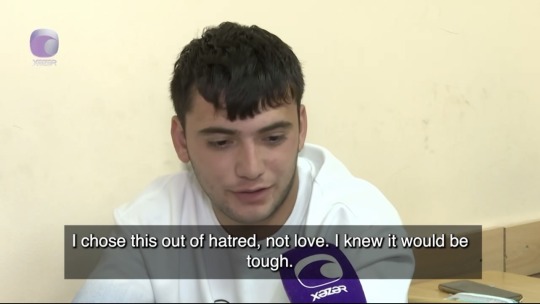
At AZ University of Languages, Armenian is taught— as Azerbaijani media promotes, as a way to understand the language of the enemy.
I saw someone say that the sad reality is that in the short term it’s to spy and gain military intel. Long term, it’s to claim the language and alphabet as their own, to forge a 4,000+ year presence in the region.
#armenian#west asia#indigenous#middle east#armenia#artsakh#indigenous languages#indigenous west asian
183 notes
·
View notes
Text
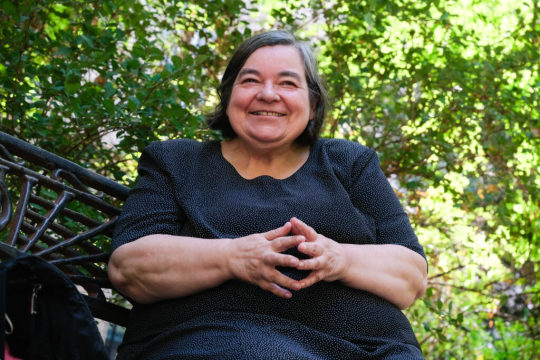
Yesterday, the linguist and activist Carme Junyent died. It saddens me deeply to write this post, because she was someone who I really admire.
She was a linguist who led the Grup d'Estudis de Llengües Amenaçades (GELA, Research Group on Endangered Languages) in University of Barcelona and author of many books and articles about language diversity and the defense of minoritized and/or indigenous languages here and around the world, and a firm defensor of immigrants' language rights and cultural diversity. She was also very active in defense of the language rights of her own community, Catalan speakers, against linguistic imperialism from Spanish and French.
Even in her last moments, she wrote an article about the right to die speaking one's mother language (Catalan in our case) if you are in your own country, instead of the usual case of forcing the patients who are part of the local marginalized and/or indigenous language community (even those in the very last moment of their lives) to speak in the dominant state language (Spanish, in our case). She sent it to the newspaper Vilaweb, where she often collaborated, to be published right after her death:
She has died of cancer at 68 years old. In her last months, most doctors who treated her in Catalonia's public healthcare system did not speak or did not want to speak Catalan, only Spanish. But she took the decision to keep firm and not change her language, so she could die in her mother tongue.
#death cw#carme junyent#sociolinguistics#linguistics#lingblr#langblr#minority languages#indigenous languages#actualitat#minoritized languages#language#languages#linguist#endangered languages#language rights#language imperialism#imperialism#llengua catalana#catalan
400 notes
·
View notes
Text
Making a separate post because it bothers me but "gaelic" is not the name of "the scottish language", it's an umbrella term for the celtic languages of Gaeilge (Irish gaelic) and Gàidhlig, the scottish gaelic, not language.
(Not be confused with the brythonic branches of celtic languages such as Welsh, Brezhoneg, or Cornish.)
#languages#gaeilge#gaidhlig#celtic languages#gaelic#linguistics#yes this is about the hozier garlic post#butchered tongue#minority languages#indigenous languages#celtic nations
267 notes
·
View notes
Text
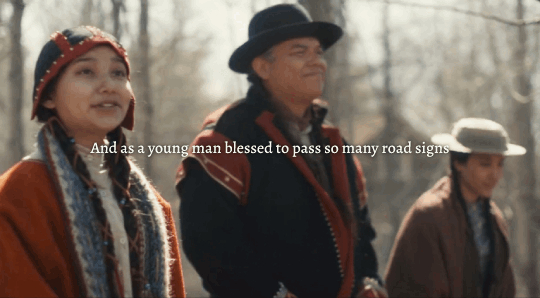

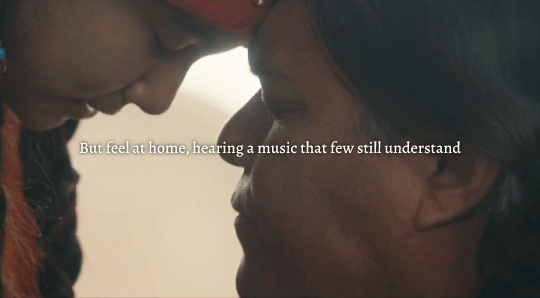
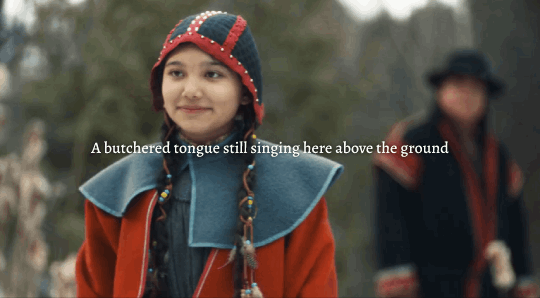


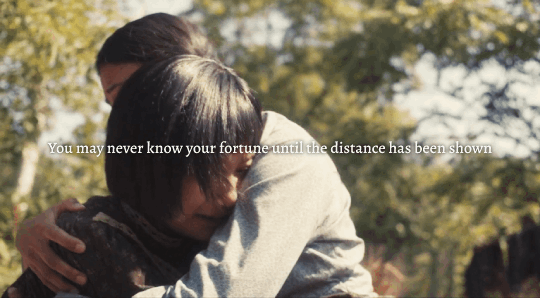

So, this song I’m about to sing you, it fits appropriately enough on the circle of violence in this album, and it just, it’s like a poem set to music that I suppose tries to credit the experience of going to different parts of the world that have indigenous names, so Apalachicola, Hushpuckena, places in Australia that we would visit, and then I would ask locals, “What does this place name mean?” and no one being able to tell me what it meant. And it just, I suppose, credits that experience. And recognizing as an Irish person, that although there’s many place names, there’s a great written history in Ireland, and we’re very fortunate that we can still learn much of the language and it’s very accessible to us, the place names and their meaning is very accessible to us, and that is not always the case everywhere you go in the world. (x)
#ka'kwet#kiawentiio tarbell#anne with an e#hozier#andrew hozier byrne#butchered tongue#unreal unearth#residential schools#cultural genocide#indigenous languages#forced assimilation
202 notes
·
View notes
Text
Dom a Lloyd : Cymru Heddiw
youtube
Hiiii!! Please share this. This is a cool video regarding Black Welsh speakers and some of the progress and some of the obstacles that have been happening in the country of Wales in regarding to Black Welsh people. Everyone can be a part of revitalizing a language and in regards to revitalizing indigenous languages (like Welsh) anti-Blackness should have no place in the process. This is something I think no one really talks about and I LOVE this YouTube channel it needs more subscribers for sure!!
#welsh#black culture#black people#black girl magic#wales#celtic#welsh language#cymru#cymraeg#black pride#black history#indigenous#indigenous languages#indigenous issues#diaspora#intercultural#welsh culture#celtic pride#Youtube
175 notes
·
View notes
Text
youtube
Sign language used by Native American peoples evolved as a way of communicating across language barriers, which proved valuable for trade, story-telling, and ceremonies. This was an interesting time in history when sign language was used alongside spoken languages. This footage is from the Indian Sign Language Council of 1930 (Plains Indian Sign Language - PISL).
Advice: Please note this video contains footage of deceased Indigenous people.
#indigenous#native american#video#sign language#plains indian sign language#language#ndn#indigenous languages#language stuff#linguistics#Youtube
90 notes
·
View notes
Text
every time i see someone say that we should erase all other languages and make english the 'universal language' I'm reminded how ignorant and culturally insensitive some people are. to not be aware of the historical and cultural significance of a language in most cultures is bizarre. in erasing a language you would thus be erasing years of important history of a culture. i hope these people educate themselves before speaking on something they know nothing about simply because it would 'make their lives easier'. not to mention its so tone-deaf to the people who are fighting for language revitalization due to the historical language suppression of their ancestors.
#language#rant#linguistics#culture#history#langblr#native american languages#gaelic#ainu#language revitalization#endangered languages#indigenous#indigenous languages
851 notes
·
View notes
Text
Ča Ča Ča
Vot mittuine nedäli da päivät tagan, ah
Interessannu pina colada da linna
Ildu on vie nuori da aigua kumata
Jiähine ulgokuori on aigu tuhota
Pien kahtel käil kiini juomizis muga
Ča ča ča ča ča ča ča ei
En smieti huondestu ku tartun kruuškah muga
Ča ča ča ča ča ča ča ei
Tahton olla segazin da välly huolis muga
Ča ča ča ča ča ča ča ei
Da sit jatkan kuni en ni pyzy stuulas muga —
Eräs pina colada on jo tagan, ah
Yhtelläh on vie ilve minul vagavu, jeah, jeah, je je jeah
Ildu on vie nuori da aigua kumata
Jiähine ulgokuori on aigu tuhota
Parkiettu kuččuu minuu ku en ni ole lukus, ah
Muga ča ča ča olen tulos, ah
Pien kahtel käil kiini juomizis muga
Ča ča ča ča ča ča ča ei
En smieti huondestu ku tartun kruuškah muga
Ča ča ča ča ča ča ča ei
Tahton olla segazin da välly huolis muga
Ča ča ča ča ča ča ča ei
Da sit jatkan kuni en ni pyzy stuulas muga vou
Da lähten pläššimäh
Muga ča ča ča
Ga en ni varua tädä muailmua a-haa
Muga ča ča ča
Ku valatan piälegi šampanskoil a-haa
Ča ča ča, vil'čusilmin jo kačon vai
Da pagin sammaldau, ku tämä toine puoli minus vallan suau, a-haa
Ča ča ča, en ni argen nenga piäze bauhumah
En ni, ga nygöi pläšin vai nygöi pläšin vai
Da lähten pläššimäh
Muga ča ča ča
Ga en ni varua tädä muailmua a-haa
Muga ča ča ča
Ku valatan piälegi šampanskoil a-haa
Muga ča ča ča
Ča ča ča ča ča ča ča!
Muga ča ča ča
Ča ča ča ča ča ča ča!
Ča ča ča ča ča ča ča!
Alguperäine pajo: Käärijä — Cha Cha Cha
Kiändäi: lyricstranslate.com/liljankukka
#käärijä#cha cha cha#esc 2023#eurovision#euroviisut#livvinkarjala#karjalan kieli#indigenous languages
155 notes
·
View notes
Text
Fun fact: in Anishinaabemowin, the term for a cat purring is "nagamo gaazhagehns" / "nagamo biizhehns" / " nagamo boozhehns" (different dialects have varying words/spellings for a house cat)
But the main thing is that "nagamo" is the verb for "he/she/that one sings"
Cat purring in Anishinaabemowin is essentially called "cat singing"
#anishinaabemowin#ojibwemowin#ojibwe#anishinaabe#indigenous languages#the words for cat also are fun#gaazhagehns comes from the verb 'gaazhage' which means 'he/she/that one eats greedily or is gluttonous#so gaazhagehns translates roughly to 'little greedy eating one'#and boozhehns/biizhehns are the diminutive versions of the the word for a lynx (bizhiw) because#--that was the example of a feline that existed in our language/world when domestic cats were introduced to us#so we just called them 'tiny/baby lynxes'#i love anishinaabemowins maliability and ability to just create words to address new things#nish tag#linguistics#original posts#indigenous tag
226 notes
·
View notes
Text
No language is useless.
Berate and scorn any moron who says otherwise. Harshly!
*yes this is about the Irish language, which many loyalists, unionist politicians and useful IDIOTS in the Republic of Ireland (all because they’re bitter about having to learn it at school, in their 40s! I say move on! For fuck’s sake!) want to see DESTROYED!*
*among MANY other languages*
#dougie rambles#personal stuff#languages#language revival#language revitalization#revitalization#vent post#political crap#language#irish language#gaelige#ireland#indigenous languages#syriac#Adyghe#basque#Talysh#navajo#Chuvash#breton#breizh#hawaiian#mixtec#nahuatl#rapa nui#coptic#Ainu#te reo māori
64 notes
·
View notes
Text
The Manitoba government has created new public service roles focused on the importance of the French language and Indigenous languages and culture in education, the province announced Friday.
Education and Early Childhood Learning Minister Nello Altomare said the province’s new assistant deputy minister of Indigenous Excellence in Education will be Jackie Connell, starting Jan. 29, while the search continues for an assistant deputy minister for the Bureau de l’éducation française (BEF).
“Education that reflects our province is key to ensuring Manitoba children are able to learn in their own cultures and learn about the cultures of their fellow Manitobans,” Altomare said in a release Friday.
“That’s why our government is creating these two new positions to advance Indigenous and French-language education in Manitoba.”
Continue Reading
Tagging @politicsofcanada
#cdnpoli#canada#canadian politics#canadian news#manitoba#language#indigenous languages#french language#education
41 notes
·
View notes
Text
Ka'Co'Ni - I Run
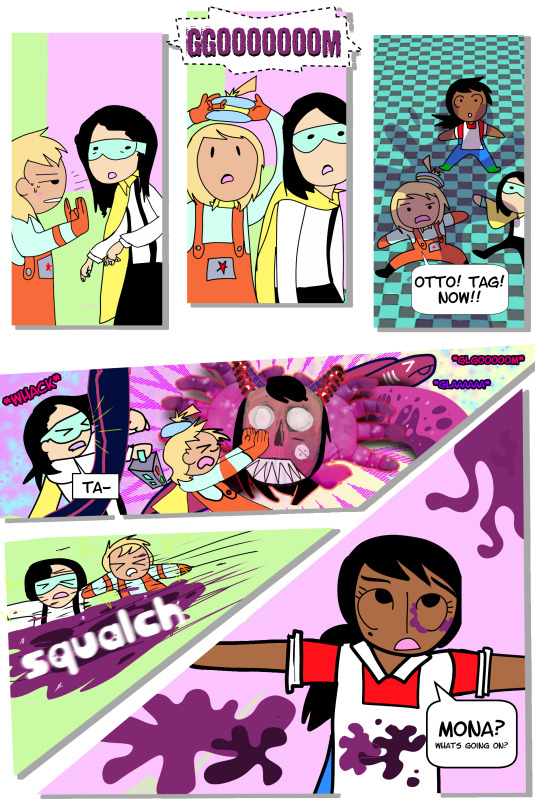

Notice the word "Co" here!!! it's exactly the same tone in "Co" or "Co'o'Yo" in let's go!
The word "Ka" in Ka'Co'Ni must refer to it being strong or something with more emphasis on it! and lastly "Ni" is a pronoun, meaning "Me" or "I"!
It's really cool to kind of start seeing the building blocks of words in Mixtec, seeing patterns form in and out of it even as I learn more and more, It's such an awesome feeling.
Next Page - Ka'ano - Big/Strong
65 notes
·
View notes